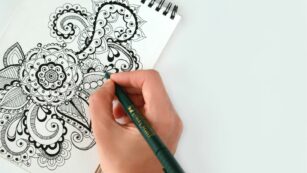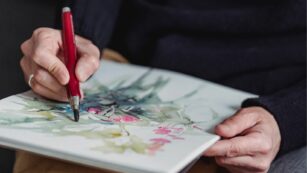
Dibujo:iiwd7u4dpig= Flor
Drawing flowers isn’t just an artistic endeavor; it’s a journey into the heart of nature’s beauty. From the delicate petals of a rose to the  vibrant hues of a sunflower, capturing the essence of flowers on paper can be both rewarding and therapeutic. Whether a budding artist or a seasoned illustrator, the world of floral art offers endless possibilities for creativity and expression.
vibrant hues of a sunflower, capturing the essence of flowers on paper can be both rewarding and therapeutic. Whether a budding artist or a seasoned illustrator, the world of floral art offers endless possibilities for creativity and expression.
Flowers have been a favorite subject for artists throughout history, symbolizing everything from love to renewal. Their intricate shapes and diverse colors present a delightful challenge for those looking to refine their drawing skills. With a few essential techniques and a keen eye for detail, anyone can learn to bring these natural wonders to life on the page.
In this guide, readers will discover tips and tricks to enhance their floral drawings, exploring different styles and approaches that cater to various skill levels. Get ready to embark on a colorful journey of artistic exploration.
Overview Of Drawing Flowers
Drawing flowers combines artistic skills and keen observation of nature. Artists focus on various flower characteristics, such as petals,  stems, and leaves, to capture their essence. Floral illustration offers opportunities to explore color variations, textures, and shapes. Including diverse examples, such as daffodils and roses, enriches the exploration process.
stems, and leaves, to capture their essence. Floral illustration offers opportunities to explore color variations, textures, and shapes. Including diverse examples, such as daffodils and roses, enriches the exploration process.
Several styles, from realism to abstraction, influence how artists depict flowers. Realistic drawings focus on intricate details, while abstract styles emphasize colors and forms. Understanding these styles helps choose the approach that resonates with the artist’s vision.
Practicing flower drawings enhances an artist’s observation skills and hones their technique. Engaging in continuous practice with different flower types, like orchids and sunflowers, improves accuracy and detail. This practice aids in mastering various artistic styles and fostering creative expression.
Essential Tools For Drawing Flowers
A well-rounded toolkit is crucial for creating detailed and expressive floral drawings. Each tool offers distinct features to enhance artistic expression.
- Pencils: Graphite pencils in varying grades allow artists to sketch outlines, add shading, and create depth. Example: 2B for soft lines, 6B for dark shadows.
- Paper: High-quality paper provides a smooth surface and can withstand multiple erasures. Example: Acid-free sketch pads prevent yellowing over time.
- Erasers: Rubber and kneaded erasers enable precise corrections and create highlights.
- Inking Pens: Fine-tipped pens define details and add contrast in line art.
- Colored Pencils: These add vibrant hues and intricate color gradients to drawings. Brands like Prismacolor provide rich color pigmentation.
- Watercolors: Portable watercolor sets apply washes of color, capturing the softness of petals.
- Blending Tools: Tools like blending stumps and tortillons achieve smooth transitions in shading.
Incorporating quality tools improves the final artwork’s precision and captures the essence of flowers effectively.
Step-By-Step Guide To Drawing Flowers
Drawing flowers involves various stages where artists hone both observation and technical skills. Each step plays a crucial role in developing a detailed floral illustration.
- Select A Flower Type
Artists choose a specific flower to draw, ensuring familiarity with its shape, petal structure, and overall form. Common choices include roses, tulips, sunflowers, and daisies. - Observe The Subject
 Detailed observation helps capture the flower’s unique features. Artists note petal arrangements, stem angles, and leaf shapes to gain an accurate understanding.
Detailed observation helps capture the flower’s unique features. Artists note petal arrangements, stem angles, and leaf shapes to gain an accurate understanding. - Sketch The Outline
Using graphite pencils, artists create a light outline of the flower’s basic structure, focusing on overall proportions and placement of elements. - Define Petal Details
Additional lines refine petal edges, highlight curves, and add texture. Artists vary line pressure to suggest depth and dimension. - Add Leaves And Stems
Artists incorporate leaves and stems, ensuring they complement the flower. These elements contribute to balance and context within the artwork. - Incorporate Shading Techniques
Shading adds depth and realism, with artists employing hatching, cross-hatching, or stippling techniques. It’s crucial to observe light and shadow interplay. - Introduce Color
Artists apply colors using mediums like colored pencils or watercolors, opting for realistic palettes or imaginative hues to convey mood and style. - Finalize And Refine
They complete the drawing by reviewing and refining details, using erasers for adjustments and blending tools for smooth transitions.
This structured approach aids artists in capturing a flower’s essence while instilling confidence and precision in their work.
